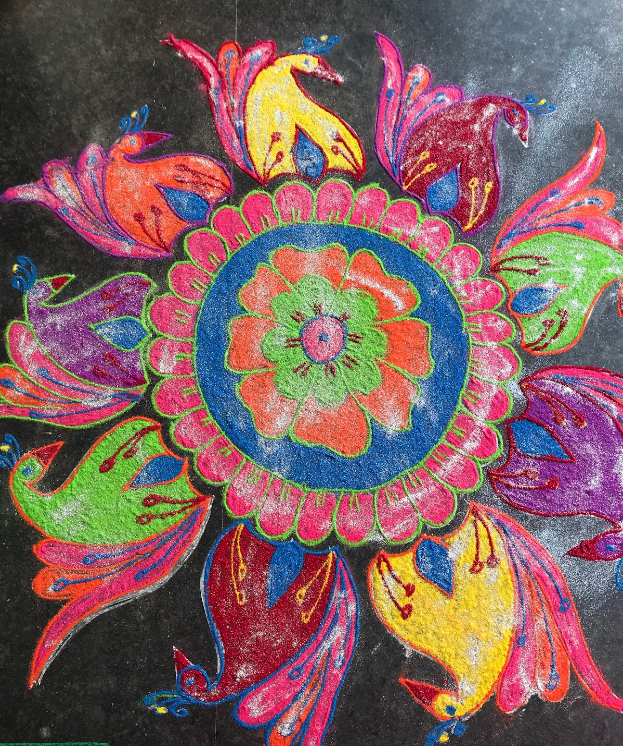Makar Sankranti: The Festival of Kites
Rangoli Design made during the Festival of Kites
Every year on January 14 or 15, India celebrates a festival called Makar Sankranti, which roughly translates to “harvest festival” in Sanskrit. Based on ancient scriptures, Makar Sankranti dates back to 400 BCE. The Vedic Sage, Vishvamitra, initiated the celebration and the concept of the festival started in Punjab. Also known as Uttarayan, Maghi, or Sankranti in different areas throughout India, it is considered to be a very auspicious event. It is celebrated all across India in different ways and forms, but it is the most popular in the North of India. People worship the Sun God (Surya) with blessings for a promising six months ahead. Welcoming in the New Year, the first festival of the year marks the first day of the sun’s transit into the Capricorn zodiac (known as Makar Rashi in Hindi) signaling the end of the month and winter solstice, and in hopes for longer days to come.
Traditions
People fly kites on Makar Sankranti in order to be exposed to the sun’s rays. This way, they can get rid of skin infections and illnesses that are associated with winter. Most of the houses are decorated with flower garlands and rangoli (colorful sand designs), and families and communities gather together to spend time with one another.
Food
People enjoy Makar Sankranti with all kinds of food. Families make til ladoo (made of sesame seeds, jaggery, and cardamom powder shaped into a sphere), puri (deep-fried whole-wheat flatbread), papad (thin, crispy crackers primarily made of lentils and chickpeas), and many more delicious foods. People eat lots of sweets containing sesame and jaggery because they’re associated with keeping the body warm and provides a good amount of oil that is essential for body moisture during the winter.
While we typically focus on more popular celebrations, it is important to know that there is a lot more depth to other cultures’ traditions. Makar Sankranti is one of those holidays that isn’t that popular within the public eye or Western culture, but is important nonetheless. If you want to learn more about Makar Sankranti, please visit the links below.
Did you know?
- People believe that wearing black will help them absorb all the good energy of the Sun as well as keeping them warm during the chilly days of the festival.
- A Makara is a sea-creature in Hindu culture. It is generally depicted as half terrestrial animal in the frontal part and half aquatic animal in the hind part Makara take many different forms throughout Asia.
- Once every eighty years, due to revolution, the day of this festival is postponed by one day.
Sources:
https://www.outlookindia.com/travel/makar-sankranti-india-s-universal-festival-news-30801

Hi! I am a reporter and Assistant Editor-in-Chief for Canyon Echos. I'm in 8th grade. I love to bake outside of school. I’m also involved in the club...
A very annoying person, who also is good at art.





















